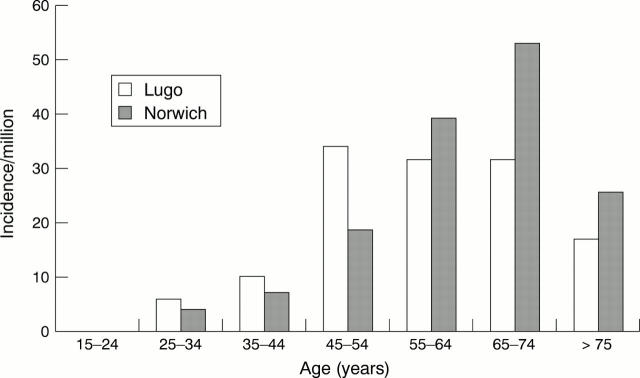Abstract
OBJECTIVE—The aetiopathogenesis of the primary systemic vasculitides (PSV) is unknown but includes both environmental and genetic factors. The development of classification criteria/definitions for PSV allows comparison of the epidemiology between different regions. METHODS—The same methods and the American College of Rheumatology (1990) criteria or Chapel Hill definitions were used to compare the epidemiology of Wegener's granulomatosis, Churg-Strauss syndrome, microscopic polyangiitis, and polyarteritis nodosa in Norwich (east England population 413 500) and Lugo (northwest Spain population 204 100). Patients with PSV were identified between 1 January 1988 and 31 December 1998. RESULTS—Overall, the incidence of PSV in adults was almost equal in Norwich (18.9/million) and Spain (18.3/million). The incidence of Wegener's granulomatosis in Norwich (10.6/million) was greater than in Spain (4.9/million). There was a marked age-specific increase in incidence in Norwich with a peak age 65-74 years (52.9/million), but a virtually equal age distribution between ages 45 and 74 in Lugo (34.1/million). There was no significant increase with time in either population, or evidence of cyclical changes in incidence. CONCLUSION—These data support the suggestion that environmental factors may be important in the pathogenesis of PSV.
Full Text
The Full Text of this article is available as a PDF (100.5 KB).
Figure 1 .
Age-specific incidence of primary vasculitis in Norwich and Lugo, Spain.



